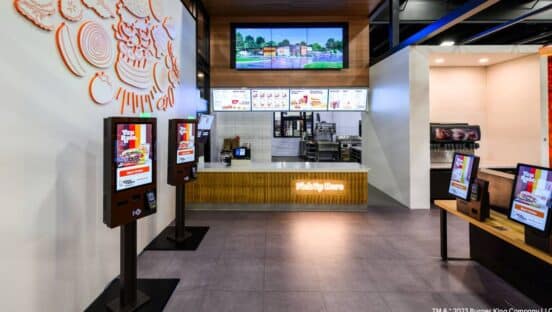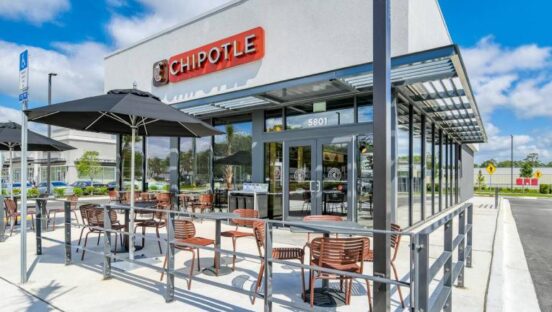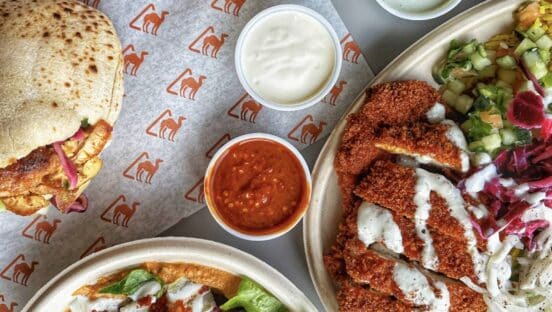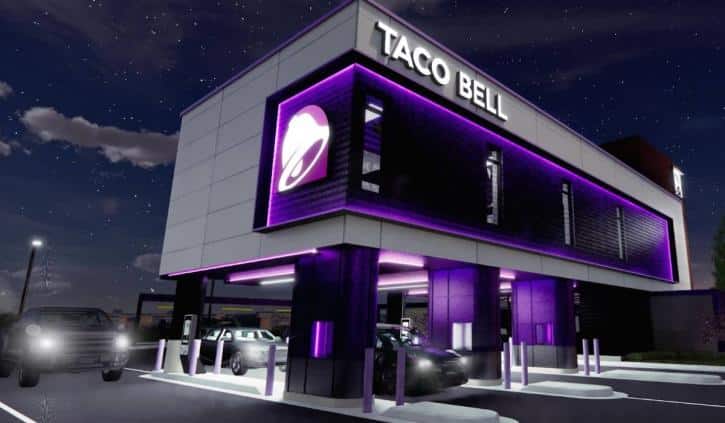


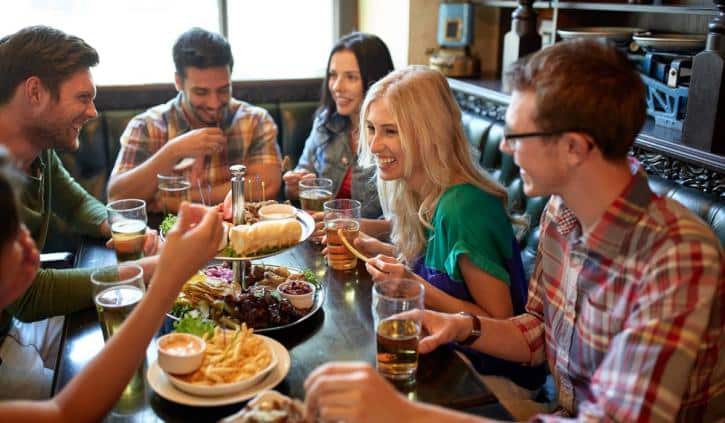

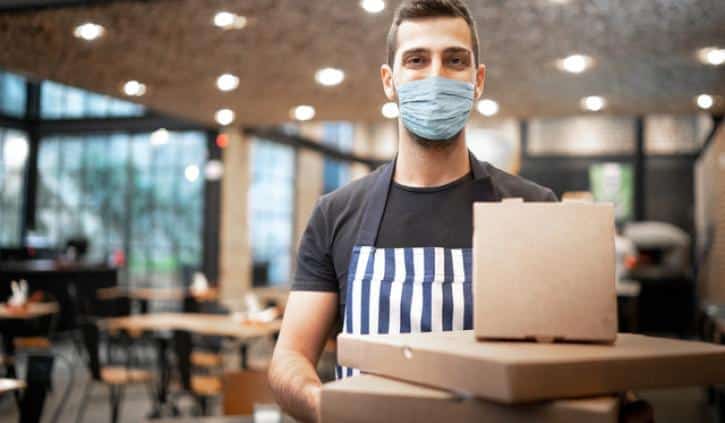
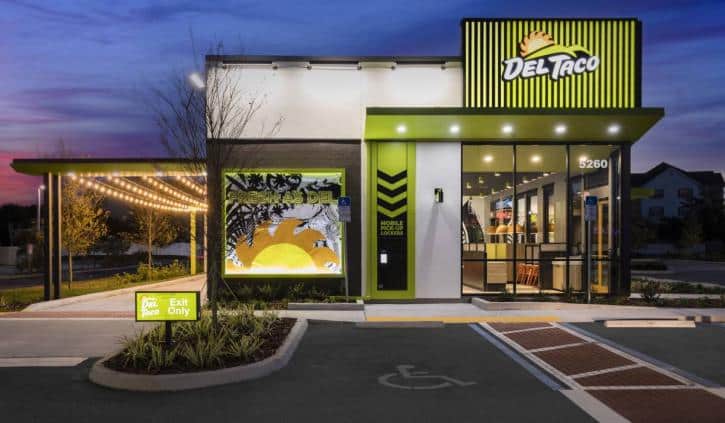
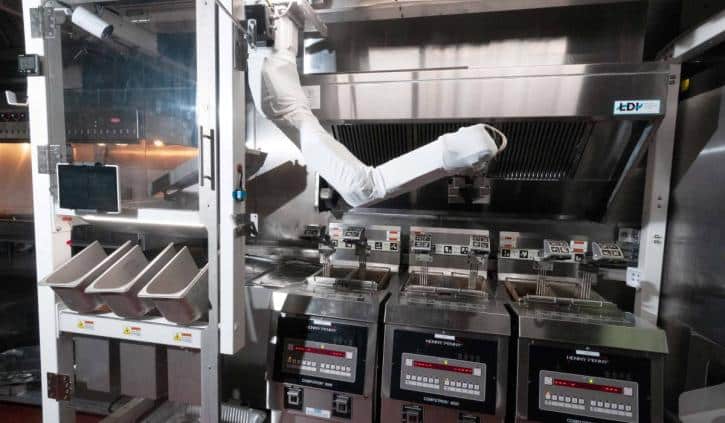
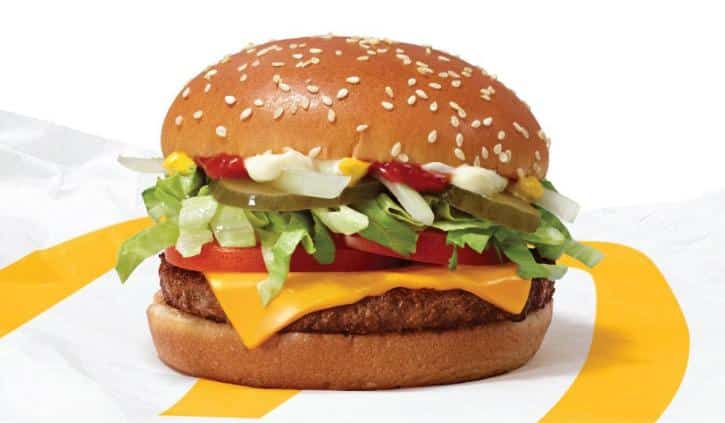

The State of Things, Two Years Later
For restaurants, the calendar may have flipped to a new year, but all of the challenges in 2021 are carrying over, according to the National Restaurant Association’s 2022 State of the Industry.
As part of its in-depth report, the Association examined six segments (casual dining, family dining, fast casual, quick service, coffee and snack, and fine dining) and surveyed adult consumers (baby boomer, Gen X, millennial, and Gen Z).
Labor, food costs, supply chain issues, and COVID disruptions are all very much a part of day-to-day operations, and many operators aren’t sure when any of these problems will cease.
Download the State of the Industry Report Here
Culinary leaders are responding to the challenge with engaging loyalty programs, menu innovation, and automation—in the kitchen and dining room—to maintain customer traffic and ease margin pressure.
“Restaurants and their patrons have found themselves in a ‘new normal.’ Given emergent technology, changing consumer behavior and dining preferences, and the extraordinary challenges of the last two years, the industry is unlikely to ever completely return to its pre-pandemic state,” Hudson Riehle, senior vice president of the Research and Knowledge Group at the Association,” said in a statement. “While recovery speed varies across the industry by segment, the constant innovation and sustained flexibility of restaurant operators are creating a new future for the restaurant industry. There will continue to be ample opportunities for growth in 2022 and beyond.”
Note: If viewing on desktop, please click the arrow in the picture to see the next slide.
Sales and Economic Forecast
This will be the second full year that restaurants have grappled with COVID, and business is still irregular.
According to a National Restaurant Association survey of more than 3,000 operators, less than 20 percent believe conditions are close to normal. Seventeen percent believe it will take another seven to 12 months before matters return to normal, and 40 percent believe it will take more than a year. There’s also another 17 percent that think conditions will never return to normalcy.
The restaurant industry is projected to earn $898 billion in sales this year, which is an increase from $864 billion in 2019. But in terms of real sales (adjusted for inflation), 2022’s projection is expected to be a 11.5 percent decline compared to three years ago.
Nearly 50 percent of operators believe sales volumes will increase year-over-year, but only 40 percent expect this year’s results to surpass 2019 levels.
“The restaurant and foodservice industry has adapted and is carrying on with absolute resilience, so we’re optimistic about the path toward recovery in the coming year,” Marvin Irby, interim president and CEO of the Association, said in a statement. “We still have work to do to ensure that those operators struggling the most can survive. The Association will continue to champion the necessary government support needed at the federal and local levels to help keep these businesses—cornerstones of our communities—on a path to better days.”
Top Challenges
About 50 percent of full-service, quick-service, and fast-casual operators expect recruiting and retaining employees to be their top challenge in 2022. The next-highest concern for each segment is food costs.
Ninety percent of operators said total food costs are higher than pre-COVID, and 80 percent said labor costs are greater. Because of this inflation, 80 percent said profit margin is lower than pre-pandemic levels, while just 10 percent have better margins compared to three years ago. Just 25 percent believe profitability will improve this year, and 30 percent think they’ll be less profitable.
An overwhelming 96 percent said their restaurant experienced supply chain delays or shortages of key food or beverage items in recent months, and 80 percent witnessed delays or shortages of equipment or service items.
In light of the supply chain situation, many operators are changing their typical timeline, like Heritage Restaurant Brands, parent of Huckleberry’s Breakfast & Lunch.
“It requires us to plan ahead more,” CEO Greg Graber said. “Things that used to take six weeks now take 12. And so we just have to be in constant communication with our vendors, constant communication with our franchise owners so that we can get these things ordered well in advance.”
Consumer Trends
The Association found data suggesting there’s plenty of pent-up demand for restaurant to leverage.
Fifty-one percent of adults said they aren’t eating at restaurants as much as they’d like, which is up 6 percentage points from January 2020. Also, 37 percent said they’re not ordering takeout or delivery from restaurants as often as they’d like, which is 7 percentage points below January 2020, meaning off-premises has now become a bigger part of consumers’ lives.
The pent-up demand appears to differ based on household income, as well. Sixty percent of consumers with household incomes below $50,000 want to go to restaurants more frequently; 30 percent in households incomes above six figures aren’t eating out as often as they’d like.
Sixty-three percent of adults—including 75 percent of millennials and 70 percent of Gen Z—said “restaurants are an essential part of their lifestyle.”
On-Premises Factors
Many restaurants view technology as the way of the future in dining rooms, but customers still seem to enjoy the typical environment.
According to the Association’s National Household Survey, 68 percent of adults preferred traditional service, including 83 percent for baby boomers, 68 percent for Gen X, 55 percent for millennials, and 48 percent for Gen Z.
One of the biggest drivers of technology is the tight labor market, which is hitting every dining segment. Seventy-eight percent of family-dining operators said there’s not enough employees to adequately staff their restaurant, followed by casual dining (76 percent), fine dining (80 percent), quick service (63 percent), fast casual (63 percent), and coffee and snack (47 percent).
Outdoor seating has played a major role for restaurants as 75 percent of adults said they feel safer sitting at an outside table. However, weather impacts availability. As of November, 54 percent of full-service operators offered outdoor dining, down from 72 percent two months before.
Off-Premises Factors
When dining rooms shut down nationwide in March 2020, restaurants were forced to up their off-premises game, and little has changed in the years since.
To-go and delivery represents a higher mix of average daily sales across all dining segments compared to pre-COVID; 64 percent of quick-service concepts and 65 percent of fast casuals said this is true. Consumers have adjusted, as well—54 percent of adults said purchasing takeout or delivery is essential to the way they live, including 72 percent of millennials and 66 percent of Gen Z.
Sixty percent of adults said they’re more likely to order either takeout or delivery from a restaurant than they were prior to COVID, including 70 percent for millennials and Gen Z.
Amid the pandemic, some restaurants also took advantage of changing alcohol to-go laws, and customers are showing demand for it. Seventy percent of Gen Z adults and 62 percent of millennials said the option of including alcohol with a takeout or delivery order would make them more likely to choose one restaurant over another.
“Numbers [for alcohol to-go] have gone down a little,” said Marty Chronister, director of Via 313’s beverage program. “But it’s beneficial for everyone. It’s good for the customer and the company. As long as we’re allowed to, we plan on selling it.”
Focus on Value
Because of constant menu inflation, operators across all segments said consumers are more value conscious, and restaurants are doing they’re best to meet those needs.
Eighty percent of adults, including almost 90 percent of Gen Z and millennials, said they’d probably join a loyalty program if it was offered. Sixty-five percent of quick-service operators and a majority of coffee and snack and fast-casual leaders see rewards programs becoming more common in 2022. More than 40 percent of full-service operators believe the same.
Del Taco recognized this trend last year, and responded with Del Yeah! Rewards to drive sales and profitability. The fast casual also rolled out a “20 under $2” value menu, which it labeled as the “largest value menu of any QSR+ brand.”
“As we look at the environment and where the competitive set was going and the consumer starting to feel that inflation, we felt like we could address that through this model,” Del Taco CEO Cappasola said. “It gives category-leading variety at $2 or under and gives the consumer exactly what they love about our brand at these price points to give them the ability to eat great fresh food and a variety of fresh food on their transaction without breaking the bank.”
Acceleration of Technology
More than 80 percent said use of technology provides a competitive advantage.
The most common implementations are service-based solutions, such as online or app ordering, reservations, mobile payment, or delivery management. However, more operators are eying upgrades to the back of house, including POS, inventory, and table management, and customer-facing tech, like tablets, tableservice ordering systems, and kiosks.
Only 25 percent of adults believe restaurants incorporate too much technology, and the same percentage thinks operators need to implement more. Customers are most interested in innovation that improves service, followed by easier payments, more detailed food information, faster experience, more takeout/delivery choices, and more entertainment options.
Thirty-eight percent said they would likely order food if it was prepared by automated systems or robots, including roughly 60 percent among Gen Z and millennials.
What’s on the Menu?
Chefs ranked immunity-boosting items as a top trend for 2022, including foods like tomatoes, seeds, berries, olive oil, and dark chocolate. Plant-based menu products are also gaining steam, like the expansion of McDonald’s Beyond Meat McPlant Burger. The Association said traditional proteins aren’t declining, but supply chain mishaps, rising food costs, and culinary exploration are all leading to an acceleration in innovation.
About 60 percent of full-service operators said their menu contains fewer offerings than pre-COVID, while fewer than 5 percent have added more items to their selection. More than 66 percent in each of the six segments expect to keep the same number of menu items in 2022. Twenty percent of family-dining and casual-dining operators said they may cut their menus even more.
Eighty-eight percent of adults (including 94 percent of millennials) said they would likely try ordering an expanded variety of food items for takeout or delivery if the restaurant used packaging that maintains the same temperature, taste, and quality. Also, 57 percent said they would likely participate in a meal subscription program if it was offered by one of their favorite restaurants.
The Labor Situation
According to the Association, the restaurant and foodservice industry added 1.7 million jobs in 2021, and ended with a total of 14.5 million. That’s almost 1 million short of pre-pandemic levels, and a full return isn’t expected in 2022. The industry is expected to add only 400,000 jobs by the end of the year.
There are long-term implications to this. Between 2010 and 2019, the restaurant and foodservice industry added an average of more than 300,000 jobs each year, but between 2023 and 2030, the growth is projected to be an average of 200,000 jobs per year.
Sixty-five percent said they reduced business hours in the past three months because of staffing shortages, and 62 percent of understaffed fine-dining operators said they reduced seating capacity. Seventy percent of quick-service leaders and 67 percent of casual-dining operators believe labor challenges will continue throughout 2022.








